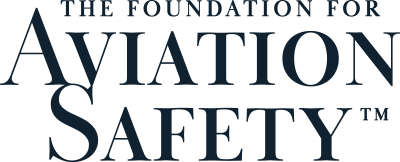Government Data Shows Airlines Have Filed More Than 1,300 Safety Reports on New Boeing MAX Airplanes
WASHINGTON, September 21, 2023 (Newswire.com) - As part of The Foundation for Aviation Safety's ongoing efforts to improve aviation safety by exploring, investigating, and exposing significant issues that affect commercial aviation, the Foundation has compiled, and analyzed safety report data filed on MAX aircraft.
Boeing MAX airplanes were involved in two fatal crashes in 2018 and 2019 that killed 346 people. The airplane was recertified by the FAA in November 2020 after an 18-month comprehensive recertification process. According to Boeing, as of Aug. 31, the company has delivered 1,298 MAX airplanes worldwide. This includes 183 MAX airplanes to Southwest Airlines, the largest operator of MAX airplanes in the United States. Other U.S. carriers flying MAX airplanes include United Airlines with 134 airplanes, American Airlines with 53 airplanes, and Alaska Airlines also with 53 airplanes.
FAA leadership has stated as recently as March 8, 2023, that the agency has not seen any trends or red flags concerning MAX airplanes.
A thorough review of the FAA's Service Difficulty Reporting database by the Foundation shows that Alaska Airlines alone has submitted at least 1,230 reports on MAX airplanes that they began flying in 2021. As a comparison, Alaska also operates 10 Airbus A321 Neo airplanes, a direct competitor to the MAX. During this same period, these Airbus airplanes had 25 total reports.
The purpose of these mandated reports is to share information to identify and fix problems to prevent accidents. The reports are legally required under Title 14 of the Code of Federal Regulations:
"In addition to the reports required by paragraph (a) of this section, each certificate holder shall report any other failure, malfunction, or defect in an aircraft that occurs or is detected at any time if, in its opinion, that failure, malfunction, or defect has endangered or may endanger the safe operation of an aircraft used by it."
The information within the reports provides vital insight into the quality of individual airplanes. Alaska's MAX airplane malfunctions involve a variety of systems including stab trim motors, anti-ice, flight management computers, autopilot, autothrottle, engines, hydraulics, pressurization, speed trim, weather radar, predictive windshear system, brakes, and auxiliary power units.
Alaska's reports are not minor problems involving broken headrests or tray tables. These are flight safety-related systems and nearly all resulted in that specific airplane being grounded. Many of the reports indicate repeat failures.
Multiple and/or simultaneous system failures can increase pilot workload and overwhelm even an experienced flight crew. They can pile up, creating holes consistent with the "Swiss cheese model" of accident causation. This is even more problematic for MAX airplanes since its crew-alerting system is based on older technology that has been found to generate additional confusion during emergencies. This happened during the Lion Air Flight 610 and Ethiopian Airlines Flight 302 MAX crashes and in at least five other airplane disasters.
While Boeing and the FAA have repeatedly stated the MAX's engineering design is safe. Alaska's MAX airplanes have been operating for a relatively short amount of time. Therefore, one cannot plausibly conclude that these incidents are primarily the result of improper operation or time-based maintenance. The overwhelming majority of these reports point directly to production-quality defects. These airplanes were all manufactured at the same Boeing factory in Renton, Washington.
Alaska's airplanes represent only 13% of the entire U.S. fleet of 423 MAX airplanes. Nevertheless, it has a preponderance of the reports because the airline appears to be complying with the letter and spirit of the law. The Alaska employees submitting these reports should be commended for their safety leadership and professionalism. On the other hand, airlines that choose not to submit reports are not making the industry safer. They are exposing the public and flight crews to unnecessary risks that could be mitigated while also incurring additional liability for their own airline.
It is important to note that foreign carriers make up approximately 67% of the global MAX fleet (a total of 875 airplanes) and these airlines are not required to submit service difficulty reports to the FAA. As such, as troubling as Alaska's numbers are — they only represent a tiny fraction of all MAX airplanes in service around the globe. Consequently, Boeing, the FAA, and the NTSB are not able to assess, or quantify, the accurate number of aircraft systems malfunctions that are occurring on all MAX airplanes in service.
The Foundation for Aviation Safety finds the MAX safety reports troubling and the industry's complacency towards them even more disturbing. We implore the FAA and other international aviation authorities including Transport Canada, the Irish Aviation Authority, and the European Union Aviation Safety Agency (EASA) to act on these reports and ensure airlines are complying with required reporting requirements.
The Foundation for Aviation Safety
Our mission is to improve public safety by closely monitoring the aviation industry and the government agencies responsible for regulating the industry.
We Believe in the Power of Transparency
For media inquiries: media@foundationforaviationsafety.org
Source: The Foundation for Aviation Safety
